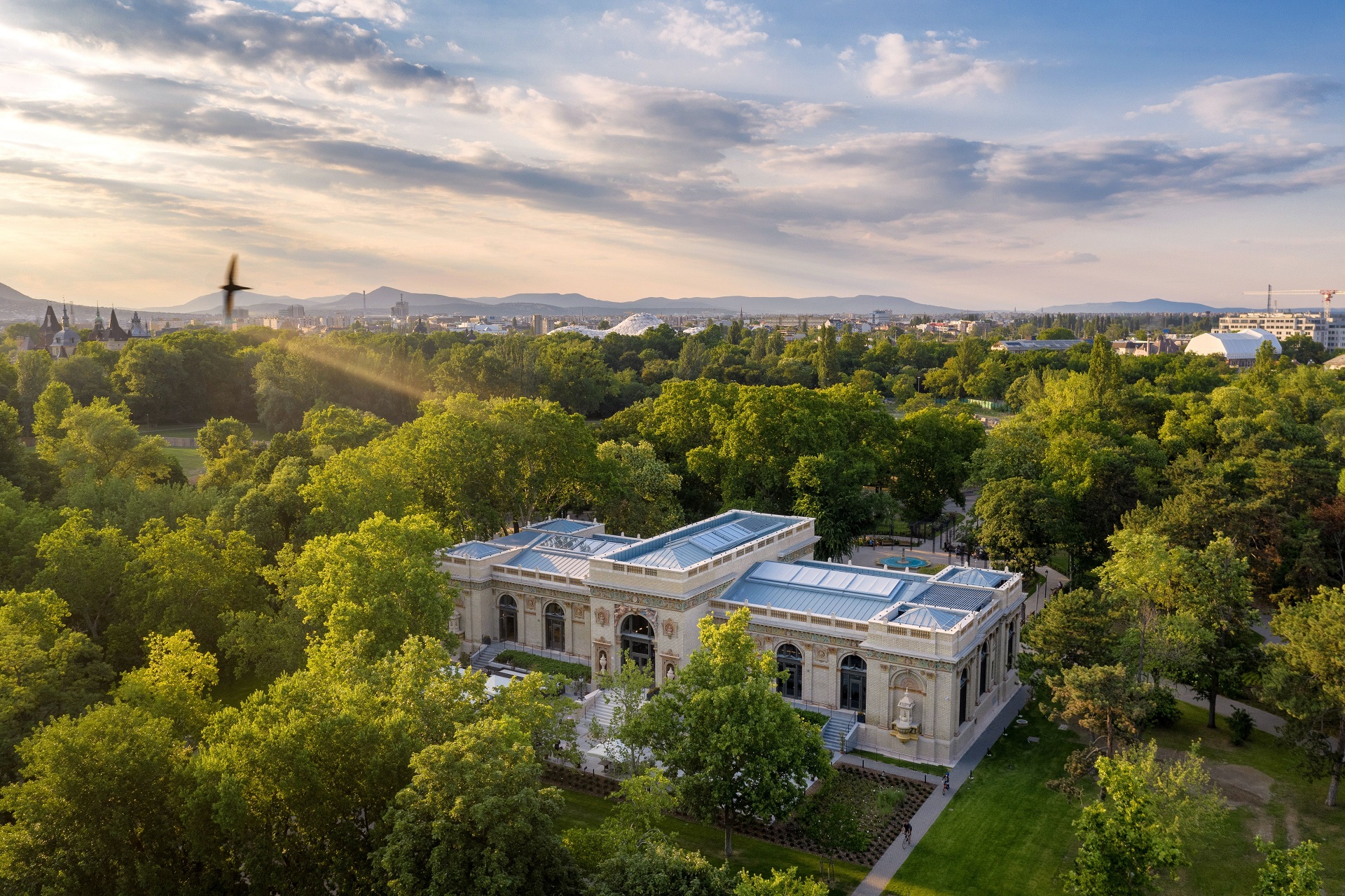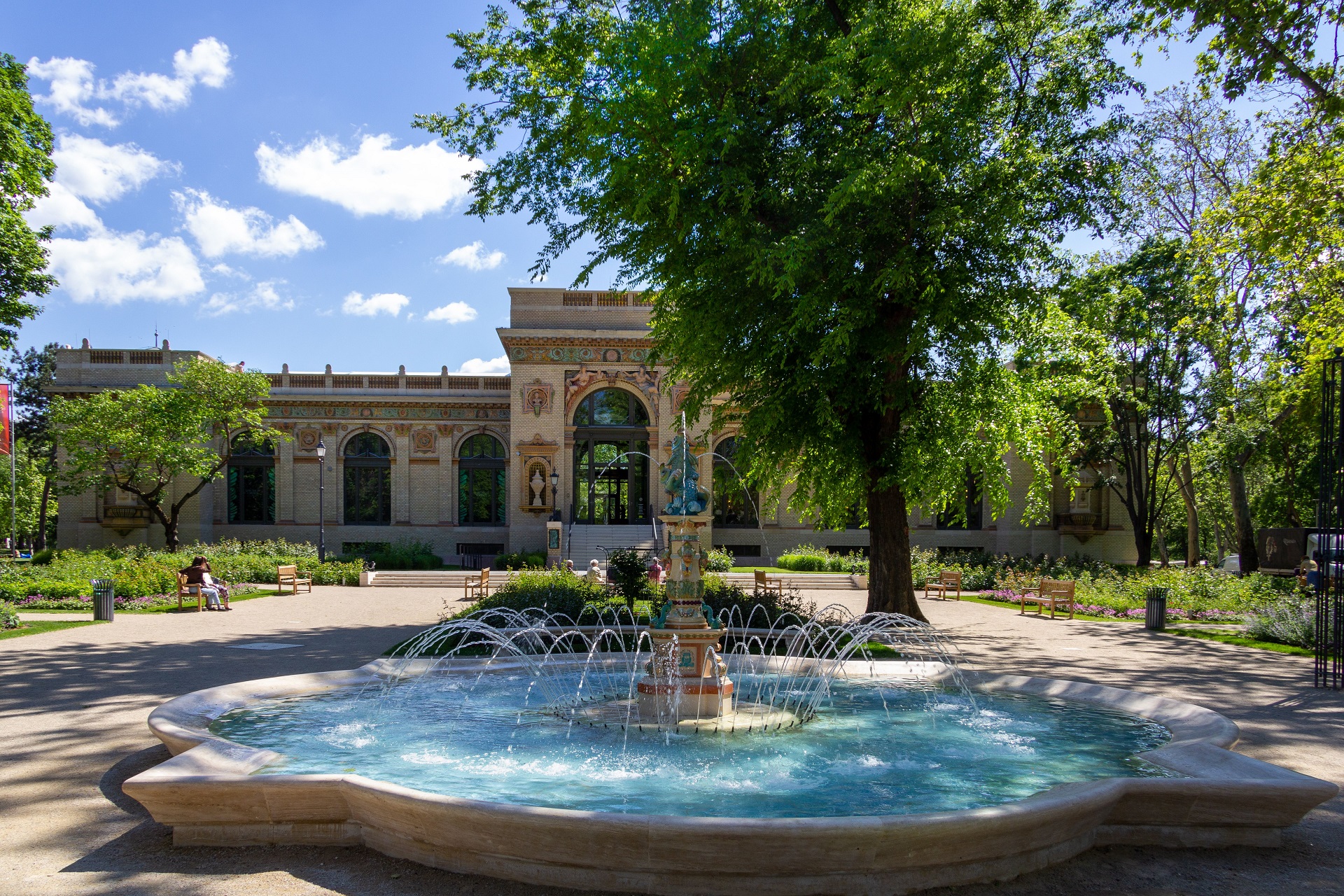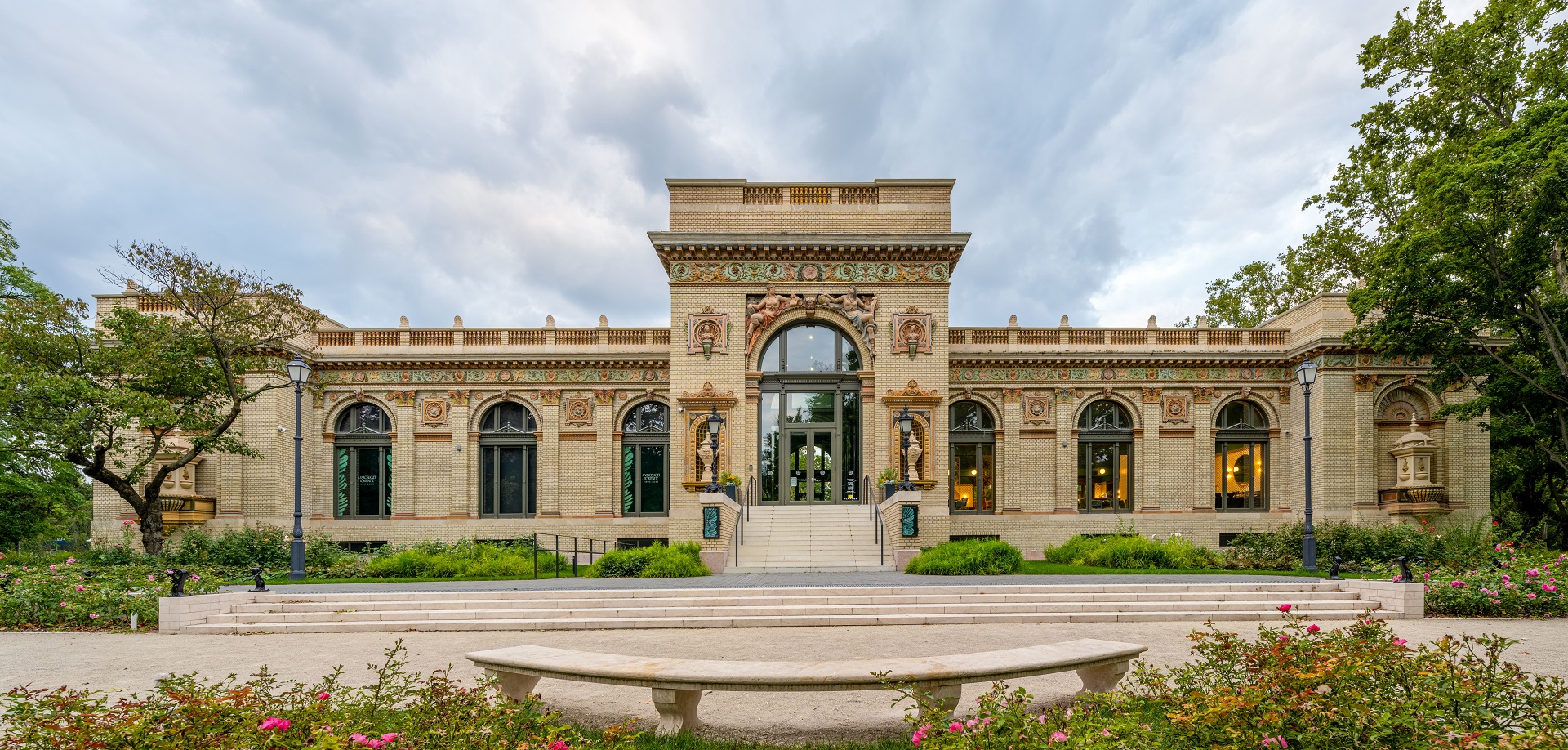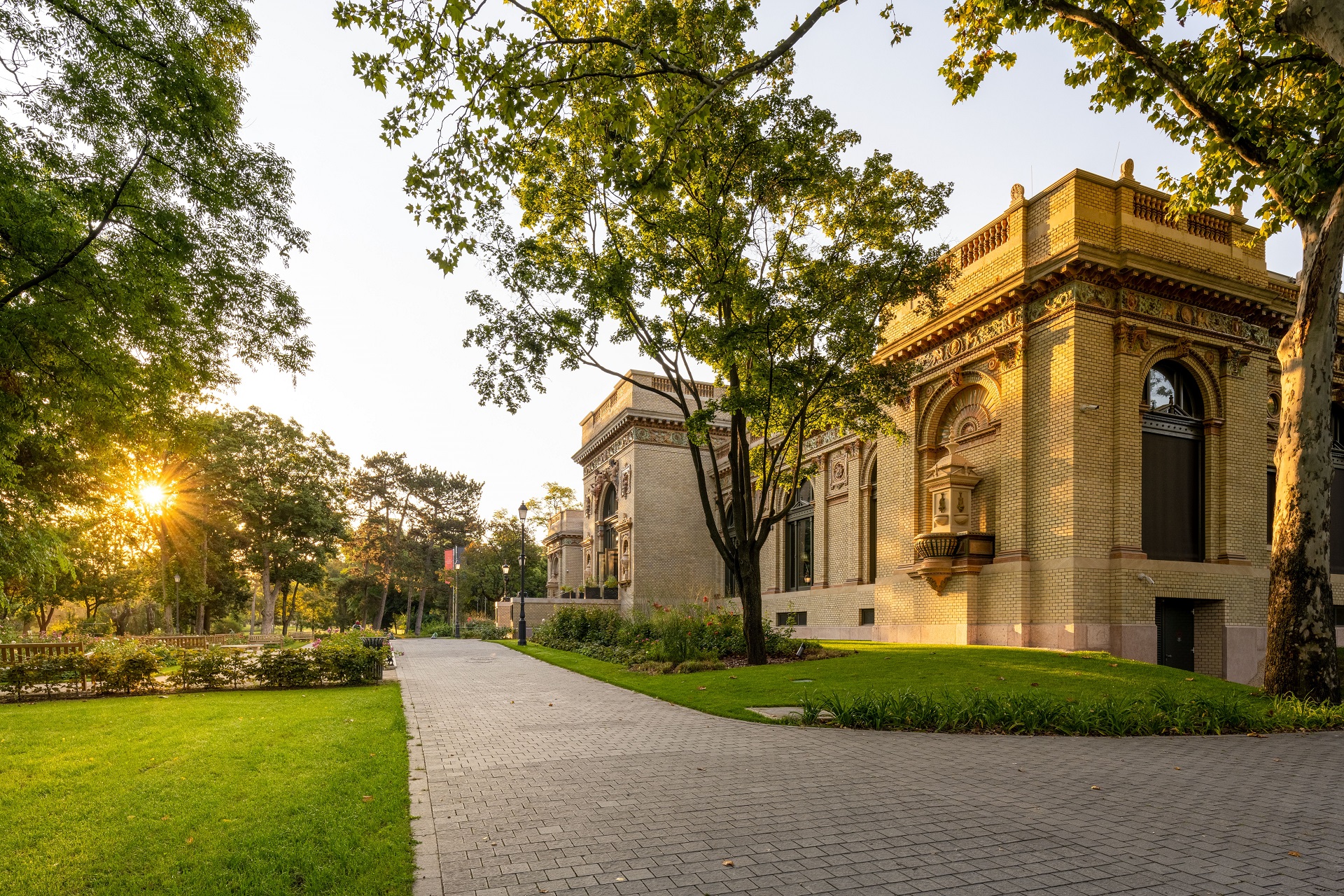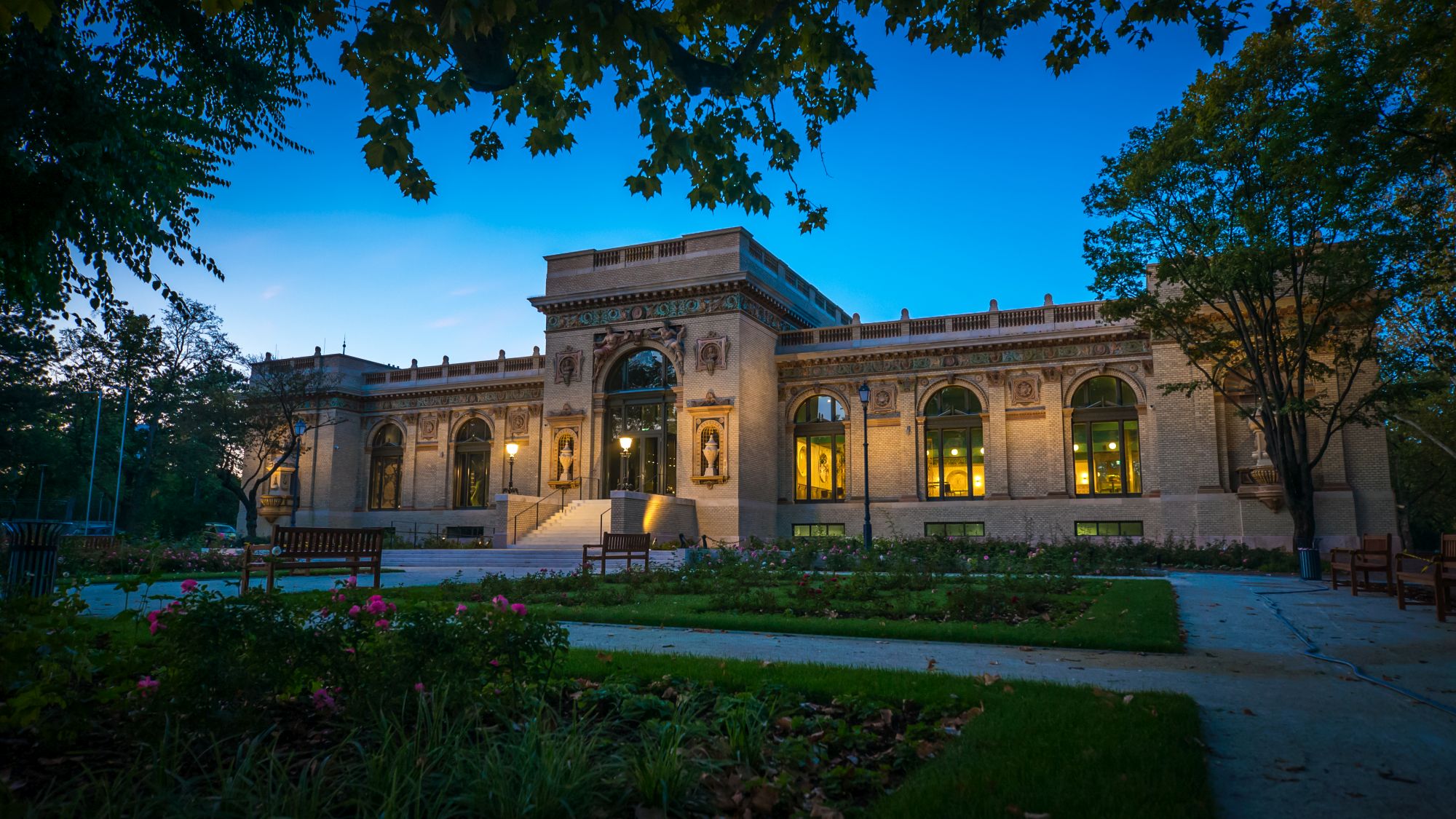
The House
As part of the Liget Budapest Project, the reconstructed, former Olof Palme House is opened as House of the Hungarian Millennium. This is the oldest building in the City Park (or Városliget) and it is one of its most precious monuments. The House of the Hungarian Millennium is a symbol of the Liget Budapest Project, becoming a real community meeting place, connecting the park with the arts The name of the house is a direct reference to the era and time when the Hungarian celebrated the 1,000 year anniversary of the establishment of the Hungarian state, i.e. 1896.
The atmosphere and spirit of the House of the Hungarian Millennium represents a harmony between fine and applied arts, history and heritage, literature and gastronomy meeting the expectations of today’s visitors.
Things to do and see:
- The House is a cultural centre with wide variety of programmes and events;
- The building is a gem of the City Park, renovated in its old splendour with decorations of Zsolnay ceramics;
- The restaurant, café and terrace uniquely merge turn of the century glory, high level culinary treats and 21st century gastronomy technology. During summer time guests can enjoy a shady terrace under the trees of the City Park;
- The Auditorium is a place for thematic popular science and educational films, a film club, cultural programmes;
- The House’s museum education services offer children and family programmes connected to the themes and artefacts of the exhibition;
- The House welcomes events either for a family celebration or for a business meeting.
- The heritage setting with high level catering and hospitality ensures guests with one-of-a-king atmosphere and experience.
History of the House of the Hungarian Millennium
The building was originally planned to be a fine art exhibition venue of the National General Exhibition in 1885. Contemporary reviews mentioned it as the most impressive building of the Exhibition, thanks to the unique Zsolnay ceramics decorations of the facades. The building designed by Ferenc Pfaff, however, proved to be too small for presenting exhibitions. Soon after its completion another, far larger and more suitable building was constructed and finished by 1896. This new venue is is the ‘Műcsarnok’ (Gallery of Fine Arts) on Heroes’ Square opposite the Museum of Fine Arts. Later the building was home of the Budapest City Museum, then it was damaged during World War II and the original interior decoration was destroyed. In the 1950s after the establishment of the Fine Arts Foundation, the building was used as a sculptors’ workshop, then as the central office of the Fine Arts Implementation Company. In this period, the interior was completely altered and got an industrial, office-like character. In 1994, the building was taken over by a new owner, i.e. the Hungarian Creative Arts Public Foundation, but its use for art purposes did not succeed.
The complete refurbishment aiming at the restoration of the original splendour started in 2017 December. It was based on the 1885 architectural plans costed of almost HUF 3 Billion The main entrance was moved back to the Hermina Street side of the building, where a new rose garden welcomes the visitors. The Zsolnay ceramics were all renewed on the façades. The 1,250 square metre building was reborn as a cultural community space with an interactive exhibition, a café with a podium stage and a basement auditorium.
